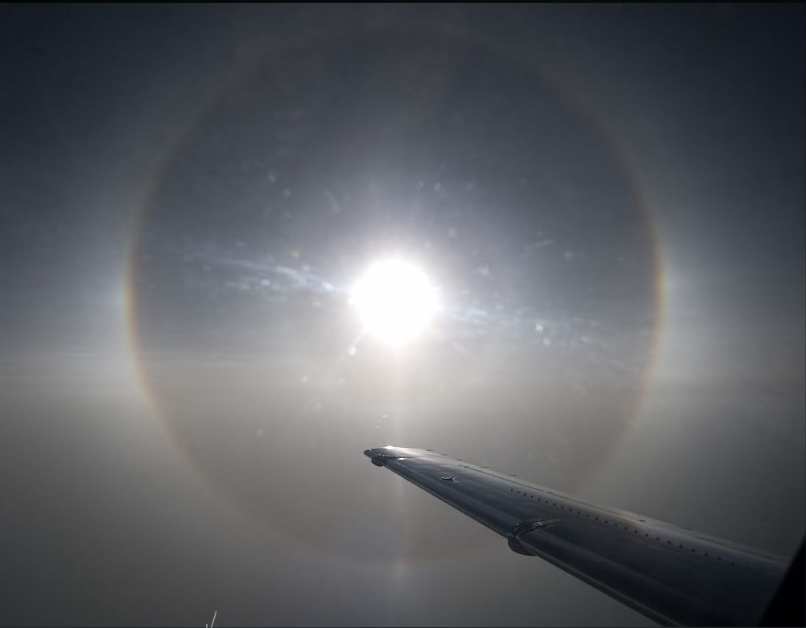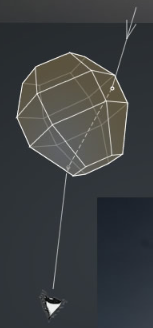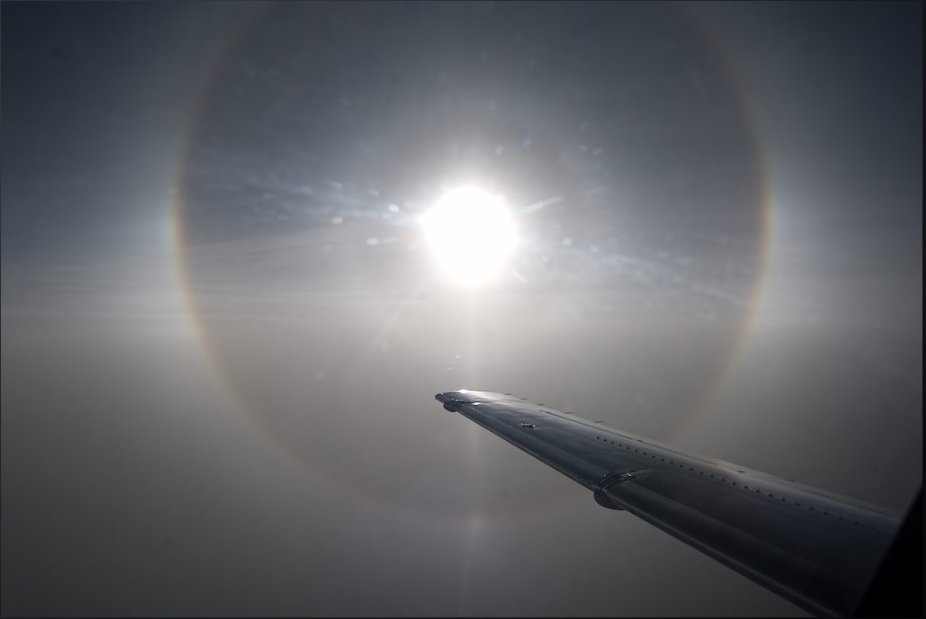OPOD - 34000ft Halos
OPOD - 34000ft Halos: Unveiling the Mysteries of Atmospheric Optics
Have you ever gazed up at the sky and marveled at the captivating display of halos? These ethereal phenomena are a testament to the wonders of atmospheric optics. Today, we delve into the intriguing world of 34,000ft halos, exploring their mesmerizing features and shedding light on their formation.
In a stunning image captured by Tim Stone (Tim's Pix) over NW Illinois, a prominent 22° halo takes center stage. Surrounding it, we catch glimpses of sundogs on the left and right, while a long lower pillar extends beneath the sun, almost reaching the lower tangent arc on the 22° halo. However, it is the faint inner circular halo that steals the show - a 9° odd radius halo formed by pyramidal ice crystals.
The formation of these 9° halos is a fascinating process. Rays of light enter a central ring face of pyramidal facets and exit through an opposite face on the lower ring. Unlike most halos, which are formed by faces inclined at 60 and 90°, the facets responsible for the 9° halos have a much smaller inclination of only 28°. As the light passes through the equivalent of a 28° prism, it undergoes a minimum deviation angle of 9°, resulting in the formation of these captivating inner circular halos.
Now, let's take a closer look at some key details surrounding 34,000ft halos:
1. Ice Crystals as the Culprits:
- The formation of halos, including the 9° inner circular halo, is intricately linked to the presence of ice crystals in the atmosphere.
- These ice crystals act as tiny prisms, refracting and reflecting light to create the stunning optical effects we observe.
2. Altitude Matters:
- The occurrence of 34,000ft halos highlights the significance of altitude in atmospheric optics.
- At higher altitudes, where the air is colder, ice crystals form more readily, providing the necessary conditions for the creation of halos.
3. Optimal Observation Conditions:
- Capturing the elusive beauty of 34,000ft halos requires specific conditions.
- Photographers like Tim Stone employ precautionary measures such as shooting through different windows to minimize the interference caused by faint rings around bright objects.
4. The Role of Sunlight:
- The sun acts as the primary source of light for the formation of halos.
- The angle at which sunlight interacts with ice crystals determines the shape and size of the halos observed.
5. A Plethora of Halo Types:
- While the 22° halo dominates the view in the image captured by Tim Stone, sundogs and a lower pillar add to the spectacle.
- Sundogs are vibrant patches of light that appear on either side of the sun, caused by the refraction of sunlight through ice crystals.
- The lower pillar, extending beneath the sun, is an elongated column of light resulting from the reflection and refraction of light by ice crystals.
6. The Beauty of Unusual Features:
- The presence of the faint inner circular halo in the image highlights the diversity of atmospheric optics.
- These unusual features add an extra layer of intrigue and enchantment to the already captivating display of halos.
As we immerse ourselves in the captivating world of atmospheric optics, it becomes evident that there is still much to discover and understand about these mesmerizing phenomena. The interplay between sunlight, ice crystals, and altitude creates a canvas for nature's artistic expression. So, the next time you find yourself gazing at the sky, keep an eye out for the elusive 34,000ft halos and let their ethereal beauty transport you to a realm where science and wonder intertwine.

Halos at 34,000 ft
Imaged by Tim Stone (Tim's Pix) over NW Illinois.
A 22° halo dominates the view. At left and right are hints of sundogs. Beneath the sun is a long lower pillar that almost reaches the lower tangent arc on the 22° halo.
But the really unusual feature is the faint inner circular halo - a 9° odd radius halo formed by pyramidal ice crystals. The halo was on several images including ones shot through a different window - a necessary precaution when cameras see faint rings around bright objects.
©Tim Stone, shown with permission.

9° halos are formed by rays entering a central ring face and leaving via an opposite face on the lower ring of pyramidal facets (ray path 3-26).
The two facets are inclined at only 28° compared to the 60 and 90° of the faces that form most halos. The ray passage through the equivalent of a 28° prism to give a minimum deviation angle of 9°

Note: this article has been automatically converted from the old site and may not appear as intended. You can find the original article here.
Reference Atmospheric Optics
If you use any of the definitions, information, or data presented on Atmospheric Optics, please copy the link or reference below to properly credit us as the reference source. Thank you!
-
<a href="https://atoptics.co.uk/blog/opod-34000ft-halos/">OPOD - 34000ft Halos</a>
-
"OPOD - 34000ft Halos". Atmospheric Optics. Accessed on November 26, 2024. https://atoptics.co.uk/blog/opod-34000ft-halos/.
-
"OPOD - 34000ft Halos". Atmospheric Optics, https://atoptics.co.uk/blog/opod-34000ft-halos/. Accessed 26 November, 2024
-
OPOD - 34000ft Halos. Atmospheric Optics. Retrieved from https://atoptics.co.uk/blog/opod-34000ft-halos/.